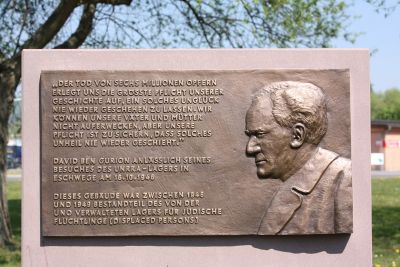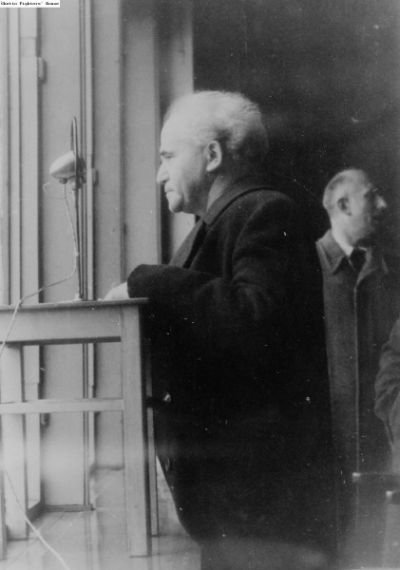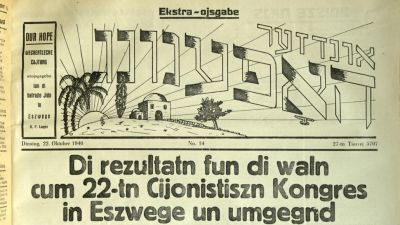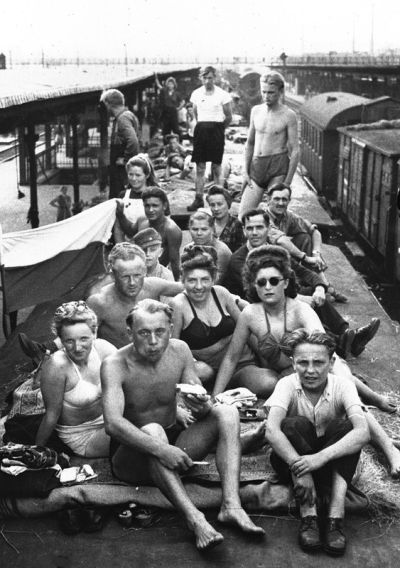The DP camp in Eschwege
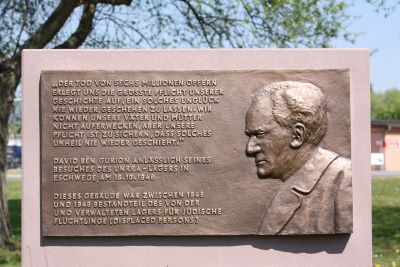
The camp was closed in 1949, despite the fact that, in March of that year, it still housed 1,669 people[4]. One contemporary witness is Michael Edelstein. He was born in Poland in 1931. In a book written and published by his children[5], he recounted his childhood in Skała-Podolska (voivodeship of Tarnopol; now in Ukraine), his life in hiding during the war, and the three years in the camp in Eschwege before he finally emigrated to the US in 1951. Another witness is Chaim Jegergarn, who was born in Janów Lubelski (voivodeship of Lublin) in 1912. A tailor from a poor Jewish family, he left Poland for the Soviet Union before the outbreak of the war. As the front drew closer, he moved to Tashkent in Central Asia. He did not return to Poland until after the war, continued westwards and found shelter in the camp in Eschwege. From 1946–1948, he spent three years there as a DP with his family. In July 1948, he moved to Montreal with his family and one of his brothers, who had survived the Holocaust[6]. He recorded a video account of his life, which is available in the Jewish Public Library in Montreal (Archives de la Bibliothèque publique juive)[7].
The same archive in Montreal contains photographs obtained from the Eschwege camp by Musia Schwartz (Miriam Szpisajzen, 1930–2021). She was born in Tomaszów Lubelski (now the voivodeship of Lublin). After surviving the ghetto, a concentration camp and the death of her family, she managed to escape the Holocaust by living under a false identity. After finding temporary shelter in Eschwege, she emigrated to Canada in 1948 as an orphan. She became a Professor of Literature in Montreal (Vanier College; Sir George Williams University, now Concordia University), specialising in comparative literature (with a doctoral dissertation at McGill University in 1979) and was a highly active member of the Jewish cultural community in the city. In symposia with Canadian students[8], she kept the memory of the Holocaust, and its dramatic impact on her Polish Jewish family, alive. An excerpt from her witness statement of 1994 in the Montreal Holocaust Museum is freely available as a video[9].
The Polish Jew Abraham [Umcza] Kerber (1907–1978), born in Gąbin (voivodeship of Masovia), who photographed[10] life in the Eschwege camp in 1946/47, chose a different path before emigrating to Israel. Like Ephraim Robinson in the camp in Zeilsheim, Umcza Kerber’s photographs show everyday life in the camp and the rebuilding of social connections between young adults waiting to start a new life elsewhere in a different country.
Emmanuel Delille, July 2022
[4] https://www.after-the-shoah.org/eschwege-juedisches-dp-lager-jewish-dp-camp/ (last accessed on 4/11/2022).
[5] Edelstein, Michael/ Ruby, Walter/ Ruby, Dan: Live Another Day. How I Survived the Holocaust and Realized the American Dream, Oakland (CA) 2020.
[6] He arrived in Canada on 11 October 1948. ITS Arolsen, Document ID: 112216813 (Chaim JEGERGARN), https://collections.arolsen-archives.org/de/document/112216813
[7] https://www.cjhn.ca/fr/list?q=Eschwege&p=1&ps=20 (last accessed on 4/11/2022).
[8] http://www.vaniercollege.qc.ca/events/holocaust07/musia_schwartz.html (last accessed on 4/11/2022).
[9] https://www.youtube.com/watch?v=nVOnGA5qPG8 (last accessed on 4/11/2022).
[10] Pictures by Kerber about the cultural life in the camp at: http://www.zchor.org/eschwege/eschwege.htm (last accessed on 4/11/2022).
